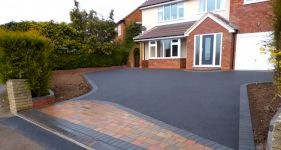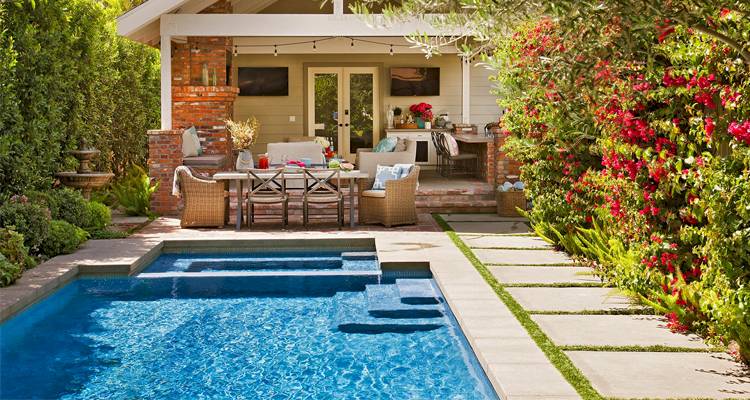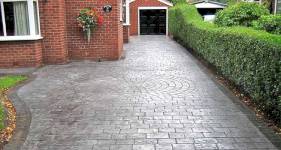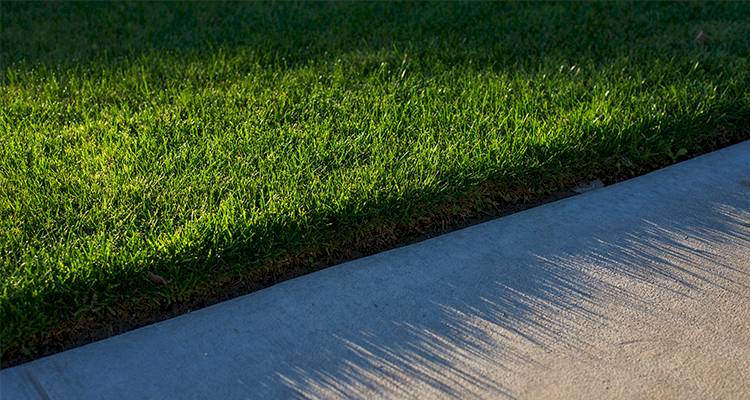Side Extension Cost
- The average side extension costs around £30,000 to build.
- The job will take approximately 12 weeks to complete.
- A breakdown of pricing information, including types of side extensions and what such a task usually involves.
- How long the job will typically take and a general overview of what kind of jobs can be performed.
- How to find and hire a builder for your extension.
Want to know how much a side extension costs? Have some side extension ideas?
This price guide encompasses all side extension costs you can expect to pay and should consider budgeting for before any building work begins.
We'll look at what labour costs and materials prices are included in a side return extension build and lean to extension, as well as realistic timescales.
On average, you're looking at a price range of anywhere between £30,000 and £60,000.
Ready to get a quote for your job?
MyJobQuote has a range of trusted and professional builders near you. Just enter a few basic details and you'll get free, no-obligation quotes for the cost of a side extension.
But, if you want to learn more about side extensions first, take a read below!
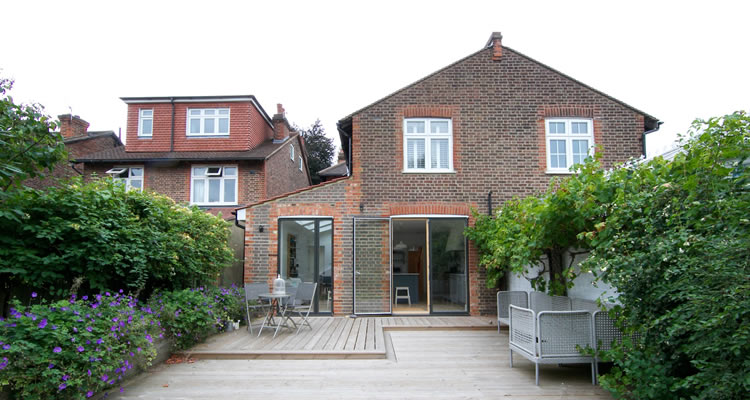
£30,000
Table of Contents
- How Much Is a Side Extension?
- Supply Only Costs
- Side Extension Labour Costs
- Side Extension Timescales
- Additional Side Extension Costs
- What Impacts Side Extension Costs?
- What's Involved in Building a Side Extension?
- Side Extension Guide
- Things to Consider When Building an Extension
- Building Permission for a Side Extension
- How to Keep the Costs of a Side Extension Low
- Can a Side Extension Add Value to a Property?
- Can I Build a Side Extension Myself?
- Extension Removal Guide
- Checklist: Hiring a Side Extension Builder
- FAQs
- Sources
How Much Is a Side Extension?
Well, average house extension prices can range from £30,000 to £60,000. This includes material and labour costs.
The specific type of extension, quality of work, and size of the installation will all affect the price. Labour costs, and the qualification of the tradesman, will also majorly affect the final expense - which is why the cost for a rear extension in the UK can be anywhere from £30,000 to £100,000, depending on the type of finishes you choose and the size of the rear extension.
Cost of Side Extension Per Storey
Single-Storey Side Extension Cost
A single-storey (also known as a single floor), is the simplest, cheapest, and most common form of side extension added to a property. Starting prices for a single-storey side extension are around £30,000 and go up as far as £50,000, dependant on the chosen dimensions of the build.
For a single-storey side extension measuring 5m x 4m, the material alone will cost around £20,000, and if you decide to add a bathroom, it will increase to around £23,000.
Double Storey Side Extension Cost
A two-storey (also known as a double-storey), is a more expensive, more complicated, and less common form of side extension added to a property. Starting prices for a double-storey side extension are around £45,000 and go up as far as £60,000, dependant on the chosen dimensions of the build.
For a small double-storey side extension, the material alone will cost around £30,000, and if you decide to add a bathroom, it will increase to around £33,000.
Cost of Side Extension by Extension Quality
An important factor in the final cost of a side extension is the chosen quality of the build.
There are three basic forms of quality to choose from: basic, medium, and premium. Each one adds advantages and disadvantages to the choice of your side extension ideas.
Basic Quality Side Extension Cost
The basic form of quality standard for a small side extension is the most cost-effective and quickest construction choice. Usually formed from a single wall layer, with simple materials, it will also often feature a flat roof.
This form can be built within 12 weeks and will often cost no more than £30,000 for a single-storey extension.
The main disadvantage of this style is the lack of freedom of choice involved in the customisation of the design. Often featuring only a small amount of insulation, if any, this type of build will not be as energy-efficient as the other two levels of quality.
Medium Quality Side Extension Cost
The Medium form of quality standard for a side extension is still a cost-effective, long-lasting, and energy-efficient construction choice. Usually formed with a double wall layer (also known as a cavity wall), with good quality materials, it will often also feature a flat roof.
This form can often be constructed within 13 weeks and will often cost approximately £35,000 for a single-storey extension measuring 4m x 5m. The main advantage of this style is the increased level of choice involved in the customisation of the design.
Often featuring a larger amount of insulation than its basic counterpart, this type of build will be more energy efficient.
Premium Quality Side Extension Cost
A pitched roof, double-wall layer (cavity wall), and practically limitless level of customisation, are the main features of a premium extension. This style will take a longer time scale to complete with the average construction taking around 13 to 15 weeks.
However, if a higher quality finish is required or a superior level of insulation, this choice of quality level is a must for those not on a fixed budget.
A premium extension built to measure 5m x 4m will begin at around £45,000 and increase up to £75,000, depending on the materials used and customisations chosen for the build.
Is it realistic to get a double-storey side extension on this house? There is an alley next to the boundary, which I thought might help our case going close to the boundary.
Side Extension Prices
| Extension type | Quality level | Duration | Average costs |
|---|---|---|---|
| Small single-storey (5m x 4m) extension | Basic | 12 weeks | £30,000 |
| Small single-storey (5m x 4m) extension | Medium | 13 weeks | £35,000 |
| Small single-storey (5m x 4m) extension | Premium | 14 weeks | £45,000 |
| Small double-storey extension (flat roof) | Medium | 15 weeks | £45,000 |
| Small double-storey extension (pitched roof) | Premium | 17 weeks | £65,000 |
Additional Options
Another common form of side extension (or lean-to extension) to add to a property is a conservatory. This is often in the form of a single-storey room, which is mainly constructed of glass, including glass walls and roof.
Conservatories are often constructed to give another space to enjoy in your property, mimicking being outside while protecting the occupant from the elements.
Conservatories (also known as an orangery) are often filled with plants and furniture for sitting/relaxing, as they allow a large degree of sunlight to fill the room and this, in turn, increases the internal temperature.
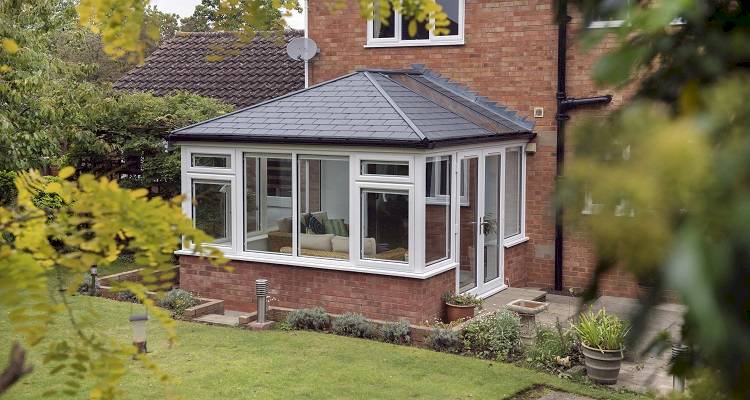
Having an easier construction method required for building a conservatory means they are often on the lower end of the scale when considering other extensions. A simple 5m x 4m conservatory costs £15,000, which is half the price of the fully built extension equivalent.
Another common house extension type is a loft conversion. Loft conversions cost anywhere from £20,000 to £60,000 depending on the complexity of your design and size of the conversion, and differ on the style, with Velux loft conversions costing close to the lower end of the scale, and mansard loft conversions commanding the higher price.
Garage conversions are also a clever way of turning an under-utilised space into another habitable room. They differ in price depending on whether the garage is integral (built within the home's structure), or detached (separate to the home's structure).
The average cost of a garage conversion is £13,500 for a single-garage conversion, while double-garage conversions or detached structures come closer to £15,000 to £55,000, depending on the spec.
To give you a clear understanding of cost per m² for these different conversion and extension styles, here's a quick comparison:
- Side return extenstion costs start at around £1,500 per m².
- Conservatory costs per m² range from £788 to £892 for glass, and £814 to £883 for polycarbonate.
- Loft conversion costs per m² range from £1,000 to £3,000, depending on the conversion style.
- Garage conversions range from £400 to £700 per m² for an average-sized integral garage, while detached garages are closer to £1,000 to £1,600 per m².
Supply Only Costs
The cost of house extension supplies will vary depending on your choices. Beyond the main construction method, the differing styles of roofs, doors, foundations, and internal structures can also affect the price.
Building Materials
Blocks
Blocks are by far the cheapest option for a side extension. If rendered, a block-work extension will look just the same as a rendered brick-built extension but at a fraction of the cost of brick.
Depending on the size of the extension and design, the number of blocks needed varies. On average, around 450 blocks will be required for a single-storey small (5m x 4m) extension.
Blocks will usually cost around £100 per 54 block sets, meaning they cost just under £2 per block.
Brick
Bricks are the standard choice when it comes to the style of block-work chosen for extension building. Bricks come in a multitude of colours, sizes, and even shapes.
The standard size of bricks, called “house bricks”, are the most commonly used, with red being the most common colour. The choice of bricks is usually around £500 to £1,000 per 500 bricks and are sold in groups of 250, 500, 750, and 1,000 bricks.
A standard single-storey small (5m x 4m) extension will take, on average, around 700 to 1,000 bricks, depending on the complexity of the design.
Sand
When building a brick or block structure, sand is required to make mortar to join the blocks together. On average, a small extension will take around two tons of sand to build - however, this number does not include the sand required for the concrete foundation.
Sand is not a very expensive material, so affordable builder’s grade sand will only cost around £50 per ton.
Cement
Cement is the other ingredient to mortar, other than sand. For every five parts of sand used, one part of cement is needed. The cost of cement is substantially greater than that of sand, costing around £5 per bag.
For a complete single-storey small extension, it will take around 10 bags of cement - this means the total cement costs would be around £50.
Roof Materials
Flat Roof
A flat roof is usually constructed of felt and tar, spread over a timber frame. The timber, felt and tar can often be purchased together within a “flat roofing kit”, which start at around £250 for a kit big enough to build a single-storey small extension roof.
However, if you wish to purchase these items separately, it will cost around £50 for the timber, £150 for the felt, and £50 for the tar.
Tiles
Roof tiles vary in price from around £1.85 per tile, up to about £5 per tile for the higher quality custom coloured varieties. The standard single-storey extension with a pitched roof will take around 1,000 tiles.
This would usually cost (with bulk purchase discounts) around £500 for 1,000 tiles, for a standard clay tile set.
Foundations
Concrete
The simplest form of foundation is a concrete slab - a mix of cement and rough course gravel/sand mix. Depending on the depth required (average is around 45cm depth), the amount of mix required varies.
Working on the average 45cm depth, it will usually take around two and a half tons of gravel/sand mix, and seven bags of cement.
For two and a half tons of gravel/sand mix, it will cost around £50 a ton. This means that for all the materials needed to lay the slab, it will cost around £270.
Additional Materials
Doors
Most extensions will need a door in order for a person to gain access. There are multiple types of door styles to choose from, and each one has varying styles and prices.
The most common style of door used is a UPVC type. This means the door is built from a plastic construction, often with a glass panel included in the top half. By far, these are the cheapest and easiest solutions to install, with prices starting at £150.
For a wooden variety, the prices can range from £250 to around £500 for a high-quality hardwood model.
Windows
For comfort and natural lighting, it is often a good idea to include windows in an extension build. The most common form of windows in modern extensions is the UPVC style.
Like UPVC doors, they are constructed of a plastic material and can be bought as a matching set with the UPVC door chosen. For a set of UPVC windows (two large windows), for a small single-storey extension, prices will usually start at around £500 and, if including a door, can often be found for around £600.
Insulation
Another cost of the extension is the insulation. This will help improve the energy efficiency of the building and help save money on heating during the winter and cooling during the summer. Standard insulation is Rockwool, which is a glass-spun fibre. This will usually begin at the cost of £25 per roll, taking approximately 5 rolls for a single-storey cavity wall extension.
Extruded PVC or foam insulation is a common modern choice for extensions. This is due to the ease of installation, easy availability, and insulation efficiency. Foam insulation often has a higher insulation rating than Rockwool (or glass fibre).
However, the price is also a lot higher for a complete extension, beginning at around £45 per sheet, and will take an average of 10 sheets for a single-storey extension. This means that foam insulation will cost around £450.
Internal Additions
Bathroom Fittings
If choosing to fit a bathroom to an extension, the cost of the fittings should be considered. A toilet and sink combination will cost around £50 to £150 depending on the style chosen.
The cost of bathtubs begins at around £150 for a simple, compact design, and a shower will begin at £150 for the tray, screen, and complete electric shower unit.
Kitchens
Kitchens are often a feature of an extension, either fitting a completely new kitchen or expanding an existing design. For a low-price, cost-effective, and small complete kitchen, kitchen extension cost will often begin at around £500 for the units, and up to around £2,500 when including the appliances such as stoves, fridges, and freezers.
Lights and Power
Every extension will require power and lighting in order to be habitable. Lighting price can vary depending on the size of the extension and the design of the lighting chosen.
For example, for standard incandescent lighting for a small 5m x 4m single-storey extension, it will cost around £75 for the materials (without fitting). A power circuit within the same sized extension will cost around £150 if added to the existing consumer unit of the property.
Savings
Though it may often be tempting to try and save money by purchasing the materials yourself, it will actually be more expensive this way. Builders and other tradesmen will commonly receive a discount from their selected material suppliers; this is due to the amount of business they provide the supplier over a prolonged period.
Often called "trade-prices" this discount will effectively be a saving of around 20 to 30% on the consumer prices, which you would more than likely end up being charged from the same suppliers.
Side Extension Labour Costs
Costs of Hiring Tradesmen
When hiring any tradesman for building work, you need to consider what specific jobs actually need doing, as not all tradesmen can handle the same types of work. Building an extension is made up of multiple different trades.
The most obvious place to start is an extension-building specialist; however, this will depend on what style of extension you have chosen. Below is a list of various tradesmen you may require and the jobs they will be undertaking.
Structural Engineer Cost
An essential part of any home extension is the expertise of a structural engineer. Structural engineers specialise in the designing and planning of structures to ensure they meet building regulations, the stability of structures, and that they are able to withstand the intended load.
Structural engineers differ from architects who are focused more on the look and function of a building, but the two trades work closely together during construction projects.
Structural engineers cost between £50 to £100 per hour, depending on your location in the UK, with those in London and the south-east encountering higher prices than those in the north of the country. The cost for a structural engineer to assist in building an extension ranges from £400 to £2,000, depending on the scope of work and the complexity of the project.
Architect or Designer Cost
When planning a new extension, building designs or drawings will need to be created. Usually, a specialist designer or architect creates the plans in order to make sure the correct materials and the correct style are used, and you get the results you want.
This will take up a large percentage of the labour costs, considering it will be one of the smaller jobs involved. The cost to hire an architect or specialist designer is usually is around £200 per day.
However, they would usually charge by a completed job rather than per day. This would be around £2,500 to £5,000 for a completed design, drawing, and technical specifications.
Concrete-layer Cost
These are hired when you require a concrete slab for the foundation. Most extensions, regardless of choice, will require a form of foundation, the most common being a concrete slab.
A concrete-layer will usually cost you around £75 per day. This will depend on the skills and experience of the tradesman. Generally, it will only take four days to complete the concrete work for a single-storey standard-sized extension foundation.
Bricklayer Cost
These contractors are hired for the construction of brick buildings. They can also often be used to construct a foundation for the extension. Using a specialist bricklayer who is experienced in building extensions is often the best option when you want a high-quality, long-lasting build.
A bricklayer’s price for labour, usually ranges from £75 to £150 per day, depending on the complexity of the job, the skills they have, and the experience they bring to the job.
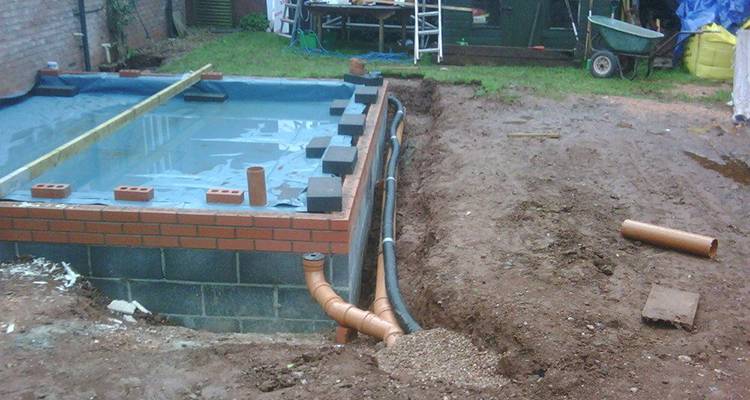
General Builder Cost
A general builder is often used to lead the entire project. They can hire and control subcontractors such as bricklayers and carpenters in order to complete the work.
Also, if building a smaller extension or conservatory, a general builder is often the best choice due to the robust nature of their experience and the labour price which can be offered.
A general builder will usually cost around £100 to £150 per day to hire, depending on the level of job required, the skills they possess, and the amount of experience.
Carpenter Cost
These tradesmen are hired if you decide to include any construction out of wood. They will often be able to undertake large parts of the job themselves without the need for further tradesmen, although this will depend on the skills of the Carpenter chosen.
A Carpenter will usually cost you around £125 per day. This will depend on the skills and experience of the tradesman. Generally, a carpenter will be required for 2 to 3 weeks to complete work on a single-storey wood-framed extension. This can increase to up to 4 weeks if a more complex roof design, such as a pitched roof, is chosen.
Electrician Cost
An electrician is usually required at the end of the build process if an electrical supply is required. From lighting, electrical heating, and plug sockets to CCTV and alarm systems, an electrician would often be able to assist in the installation of multiple extension upgrades.
The average required time to hire an electrician would be for around 4 to 9 days, depending on the amount of work required. The day rate for an electrician often starts at around £125 per day, depending on their qualifications and specialities.
Plumber Cost
A plumber is usually required both during and at the end of the build process if a water supply is required. From water pipes, central heating, and radiators to taps, toilet systems, and wastewater disposal, a plumber would often be able to assist in the installation of multiple extension upgrades.
The average required time to hire a plumber would be around 3 to 9 days, depending on the amount of work required. The day rate for a plumber often starts at around £125 per day, depending on their qualifications and specialities.
Carpet Fitter Cost
After constructing a new extension, it is common for a new flooring layer to be laid within. This usually will consist of various carpets. Fitting a carpet can be a difficult process, and it is usually best to hire a carpet fitter to do this.
The carpet fitter will first measure the area in which the new carpet is to be fitted, provide the sizing for the required new carpet, and then, once purchased, will be able to lay the covering within the newly built extension.
A carpet fitter will usually cost around £100 to £120 per day to hire, depending on experience and level of skill.
Kitchen Fitter Cost
A kitchen fitter is usually required at the end of the build process if a kitchen has been chosen to be installed. From cupboards, drawers, and units, to appliance systems such as stoves and fridge freezers, a kitchen fitter would often be able to assist in the installation of multiple kitchen upgrades.
The average required time to hire a kitchen fitter would be around 3 to 5 days, depending on the amount of work required. The day rate for a kitchen fitter often starts at around £115 per day, depending on their qualifications and specialities.
Glazer or Window Fitter Cost
While constructing a new extension, it is usually necessary for windows to be fitted to the extension. Fitting windows is a very difficult process, and it normally requires hiring a window fitter to do this.
The Window Fitter will first measure the area in which the new windows are to be fitted, provide the sizing for the required new windows, and then once purchased will be able to fit them within the newly built extension.
A window fitter will usually cost around £125 to £150 per day to hire, depending on experience and level of skill.
Labourers Cost
The most inexpensive form of tradesman, a labourer, should not be overlooked when costing the job. Usually, a specialist will provide their own personal labourer - however, you should be mindful of the costs of hiring them.
The day rate of a simple labourer will usually be £50 to £60 per day. They are used for all the heavy lifting work, moving materials, and jobs which do not require a specific skill.
Side Extension Timescales
One of the most important factors when considering any building work is obviously timescale. No one wants a job that drags on indefinitely with no idea of when it will be completed. Also, the longer a project takes to complete, the greater the final price.
Extensions are no exception. Second to this is the price of labour. However, timescale has a direct effect on the cost of labour, as the longer a job takes, the longer you will be required to pay your selected tradesman.
There are multiple factors which can affect the timescale. The most obvious being the complexity of the project, the size of the build, and the final quality of the extension. Choosing to build a double-storey extension will take longer than a single-storey, at around 16 weeks compared to 12 weeks.
A large single-storey extension will take longer than a small single-storey, at around 14 weeks for a small compared to 15 weeks+ for the large. However, these factors will also depend on the level of complexity in the plan, the skills the tradesman possesses, and the amount tradesmen needed to be hired for the project.
| Tradesman | Time Needed (days) | Cost per Day | Required or Optional | Total Labour Cost |
|---|---|---|---|---|
| Structural Engineer | 3 hours to 1 day | £450 | Required | £400 - £2,000 |
| Architect | 12 days | £200 | Required | £2,400 |
| General Builder | 60 days | £100 | Required/Optional | £6,000 |
| Concrete Layer | 3 days | £75 | Required | £225 |
| Brick Layer | 40 days | £75 | Required | £3,000 |
| Carpenter | 14 days | £125 | Optional | £1,750 |
| Electrician | 4 days | £125 | Required | £500 |
| Plumber | 4 days | £125 | Optional | £500 |
| Carpet Fitter | 3 days | £100 | Optional | £300 |
| Kitchen Fitter | 3 days | £115 | Optional | £345 |
| Glazer/Window Fitter | 3 days | £125 | Required | £345 |
| Labourer | 60 days | £50 | Required | £3,000 |
Additional Side Extension Costs
Materials and labour are not the only side extension costs to consider when building a side extension. Building any structure will have additional expenses.
If you require your extension to have a fitted security system, such as outdoor security lights (£50), CCTV cameras (£150), additional locks (£25), and alarms (£100) it will need a specialist to fit them. Many security features can be fitted by the electrician - however, if not a security specialist will usually cost around £150 to £200 per day to hire.
After the extension is built, you will only really have a building, void of any internal structures such as shelves or cupboard spaces. Hiring a carpenter or general builder to fit these can raise the costs of the final project substantially.
A carpenter will cost you around £100 to £150 per day, and if you require bespoke cupboards it may be best to hire a specialist kitchen fitter.
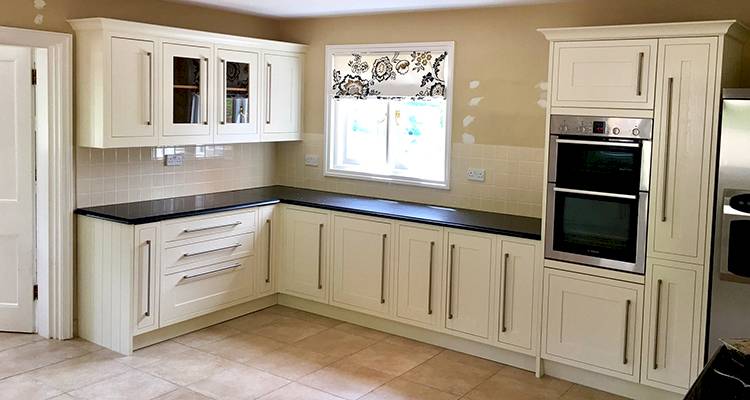
A standard cupboard set of around five individual units will usually start at around £100. However, this cost will increase and vary depending on the size, shape, and number of units required.
Second-hand cupboards are widely available online, and this can be a great price-saving option. The average cost of a single second-hand cupboard is around £15, with groups of up to five costing as low as £70.
Guttering and drainage are a common concern when dealing with building projects. The most common form of drainage is the use of a water butt, fed from a guttering and drainpipe system.
The cost of a water butt begins at £10, depending on size. For a guttering kit to fit a single-storey small extension, costs begin around £150. Either the general builder or even the homeowner can usually fit these, as they are often simply screwed into place at the edges of the roof.
What Impacts Side Extension Costs?
The cost of labour takes the largest chunk out of your building budget. However, the other expenses, such as materials, doors, windows, and internal decorations, will also take up a large section.
Materials can easily surpass the price of labour if only the finest materials are selected. The makeup of an extension is extremely customisable, with a choice of materials, colour, shape, design, doors, room content, plumbing, and security.
The planning of your extension will determine many of these factors; however, it is always best to keep a budget in mind before beginning preparations and buying materials. The size of the house extension planned will have a direct effect on the final price.
A double-storey small extension will usually cost almost twice as much as a single-storey; however, this is not always the case. A double-storey extension begins at £45,000, and the single-storey matching equivalent would begin at around £30,000.
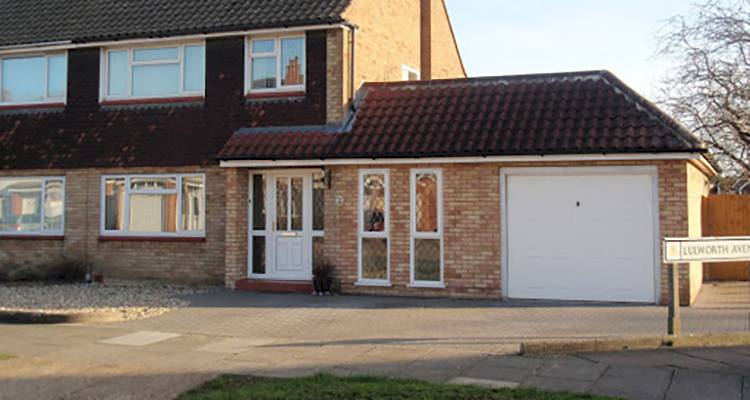
Quality of the build also factors into the final cost of a house extension. A single-storey small (5m x 4m) extension completed to a basic standard of quality will begin at around £30,000. However, for the equivalent medium and premium quality builds, it would increase the price to £45,000 and £75,000 respectively.
Do not forget the costs for planning the project and disposal of waste after the completion of the build should always be accounted for in the budgeting stage. Waste disposal will usually consist of hiring a skip.
A skip is a large metal container used as a bin for the disposal of building waste. Skip hire costs around £150 for a single skip hired for a week. Included in the price of the hire, is usually the cost of collection and disposal of the waste.
What's Involved in Building a Side Extension?
Budgeting
The first step is going to be planning a budget. This is a very important step, as there is no point in starting a project you cannot afford to complete it. Factors such as materials, labour, and additional expenses need to be calculated at this stage.
Planning
In the planning stages, you will need to decide where you wish the extension to be built, the style of extension you are going to construct, and the types of tradesmen you will have to hire.
After you have made these decisions, you will have to hire a specialist to draw up a plan for the project. The plan will allow you to see an approximate cost for the materials, the tradesmen required, and the permissions needed in the construction.
Quotes
Quotes are vital to any construction project, as not all tradesmen charge the same rates for the same job. It is always best to get at least three quotes from three different companies in order to ensure you are getting the very best for your money.
Laying the Foundation
Now the actual work begins. Firstly, the site will need to be cleared. Then, the place where the foundation will be laid will need to be dug out to the dimensions of the plan.
Once dug, the hole will need filling with the foundation material. This will usually take the form of a concrete slab. Mixing and laying the concrete should only take around a day for a qualified professional; however, the drying time can vary depending on the weather, climate, and strength of the cement used.
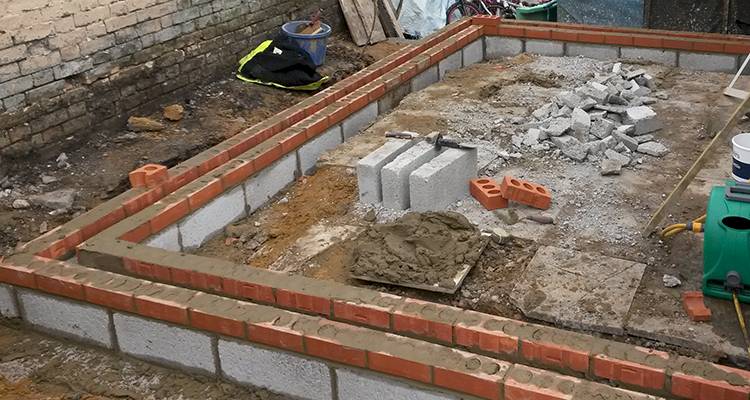
Construction
The construction stage will vary drastically depending on your chosen style of extension. If a simple single-storey brick-built extension has been planned, this will be when the brickwork is laid, the roof supports placed, and any internal specialist dimensions are constructed.
Roof
With the walls now complete, it is time to fix a roof to the build in order to keep the weather out. This step can vary depending on the style of roof chosen. A tiled roof will need more timber supports than a flat roof, where sheets are usually just simply screwed into place, before being covered with the roofing supplies.
This stage will usually take around 3 to 5 days. However, this is very dependent on the weather during the roofing process.
Fitting the Internals
Doors, windows, electricity, lights, flooring, kitchen equipment, and bathroom fittings will now all need to be installed as required. The door and windows are just as important as the roof, but most doors and windows will be able to be fitted in just a day or two.
Lights and other electrical devices will require an electrician to install, and bathroom fittings and kitchens will often require a professional to fit them.
Enjoying Your New Extension
The final step of constructing your house extension is to actually enjoy it! Whether it was constructed to extend your kitchen, add additional bathroom spaces, or even just as a place to escape the kids for a minute’s peace, such as an office or spare room, you should not forget to enjoy the new structure you have taken the time and money to build.
Side Extension Guide
Not all extensions are created equally - there are pros and cons for each chosen style. Materials used, timescales, and final build quality all factor into which type of extension you will choose.
Some extensions have obvious advantages over others, and yet others have subtle differences you may not consider from the beginning. It is always best to compare your needs before planning which extension you will build.
Basic Extension
The pros of this style of extension lay in its quick and simple building times, along with the rock bottom prices available on the market (as low as £30,000 completed).
However, the low rating of insulation for this type, along with the lack of flexibility, may not be the right choice unless you are only looking for a small and simple solution.
Often a basic extension will be too small to have a kitchen or bathroom fitted. For a double-storey version of the basic extension, it will often cost around £40,000 to complete.
Medium Extension
The pros of this style of extension also lay in the quick completion times. This is more complex and takes a greater degree of skill than a basic quality build, but with a higher level of insulation rating than its basic counterparts offer.
The cons of this style are its higher final cost and complexity of construction. Medium-quality extensions (an average of £45,000 completed) are the most commonly chosen form of extension due to being able to fit either a bathroom or kitchen extension while maintaining the energy efficiency rating of the property.
For a double-storey version of the medium-quality extension, it will often begin at around £60,000 to complete.
Premium Extension
The most expensive option, a brick-built premium quality extension is an expensive installation, which is not to be considered lightly (average of £65,000 completed). The pros are the high insulation rating, long lifespan, higher quality, customisable spaces due to large sizes, and versatility.
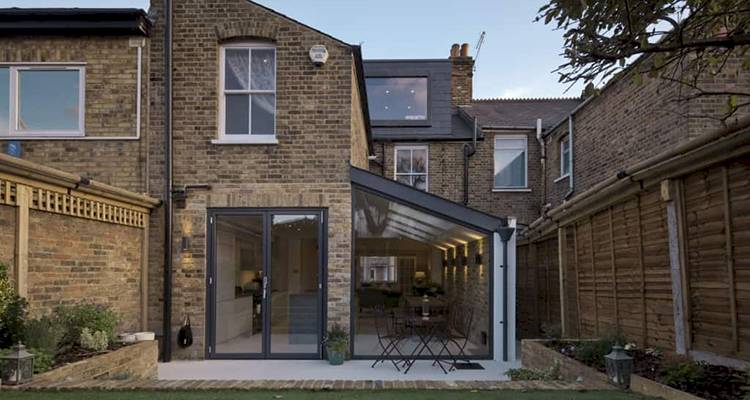
However, with the high price tag, long construction times, and complexity of the overall project, these builds are serious decisions. For a double-storey version of a premium quality extension, costs will often begin at around £75,000 for the completed design.
A premium single-storey extension will often have ample room for a new kitchen to be fitted within, and if a double-storey is chosen, it would provide enough room for a bathroom to be added as well.
Conservatory
If you want to extend the space within your property while on a very tight budget, a conservatory is a great option. Adding a large amount of light and providing a comfortable place to relax, conservatories are very common styles of extensions.
The starting price of a simple 5m x 4m conservatory will often begin at half the price of the built extension equivalent, at £15,000. This price can increase up to around £30,000 for a premium quality-built orangery (or half brick and half glass conservatory).
Things to Consider When Building an Extension
You have to put a lot of thought into even the smallest side extension to ensure you come out well in terms of adding property value and recovering your investment. Also, there are many practical issues which are not directly concerned with the building process, so they are easy to overlook.
For example, access is a typical problem, and the lack of off-street parking might be a reason for the refusal of planning permission. Once again, an experienced architect can be worth their weight in gold when it comes to these issues.
Other issues which you need to consider are the site services, any trees, a history of flooding in the area, rights of way and the soil conditions on the site.
Another major consideration is whether or not you move out while the work is in progress. Adding a side extension is a messy, dusty and disruptive process, and there is no getting around that!
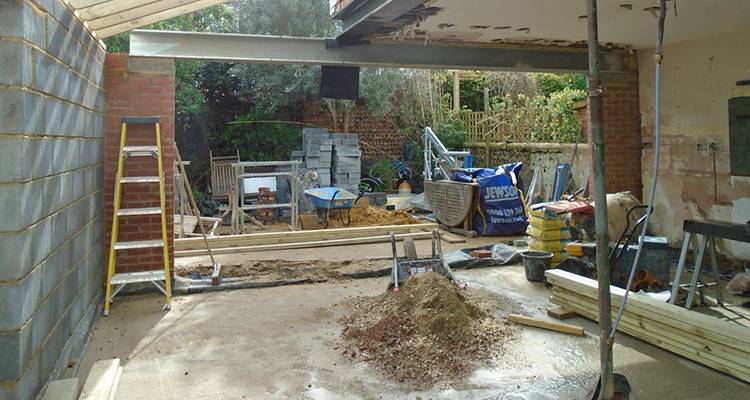
However, with side extensions, you may be lucky enough to be extending from a room that can be sealed off completely and is not used on a daily basis (such as a dining room), thereby greatly reducing the inconvenience and mess. But in most cases, it will be wise to move out for the duration if at all possible.
Building Permission for a Side Extension
Before you begin planning your dream extension, you should talk to a local estate agent to find out the street ceiling value and also see what other types of extensions are popular.
In addition, employing an architect is highly recommended. By using an architect, you will get a new home that’s just right for you, plus you can avoid having a badly designed extension, which can actually reduce the property value. You need to work out whether you will get back the cost of the side extension when you finally sell the house.
Architects can manage the entire building process, including securing planning consent and building regulation certification. They can even help with finding a suitable builder, as they often have good relationships with reputable builders they have worked with in the past.
The RIBA can provide a shortlist of architects for your project, or you can use the free service on this website.
How to Keep the Costs of a Side Extension Low
For those on a fixed budget, keeping costs as low as possible is an extremely important consideration. There are a few steps that, if followed, will help reduce the overall price of the extension.
Some of these steps are simple and may only save you a little. However, some are a little more drastic and could end up reducing your final cost considerably.
Quotations
The first cost-saving step could be simply getting a variety of quotes from a number of different tradesmen. On average, you should always look to get three to five quotes for each tradesman required for the project.
This will help you assess which contractor would be best suited for your budget, as individual prices can vary quite drastically from tradesman to tradesman.
Reuse and Recycle Materials
Reusing second-hand or recycled materials can also help to save a substantial amount from the final cost of the project. Buying brand-new items will always cost more than finding a second-hand alternative, and with multiple parts of the build, recycled materials can be just as good as using new ones.
For example, using second-hand kitchen units (five units) will save you on average around £500 when compared to the equivalent brand-new versions.
Managing the Project Yourself
If confident enough, you may be able to manage the project yourself, instead of hiring a general builder to lead. This would involve hiring all the tradesmen yourself, taking a lot of time out of your day, and means you are responsible for making sure everything is done correctly to the plan.
However, this method of self-managing can save you as much as £6,000 off the labour costs. Meaning, in the long run, it may be a great way of cutting costs.
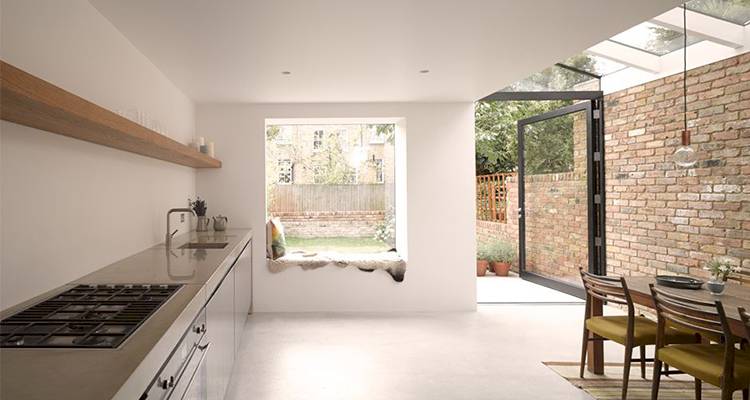
Simplistic Design
Sticking to a simplistic design and not getting carried away with expectations can help keep the costs of the final build to a minimum. Make sure you only include in the design specification specific aspects you really need.
If you do not wish to extend the kitchen or add a bathroom within the extension, then a plumber and water supply would not be required.
Buying Off the Shelf
Purchasing off-the-shelf items and materials, instead of using made-to-order stock, will often save a considerable amount of time and money in the construction process. Instead of custom build kitchen units, windows, and doors, use a standard off-the-shelf size and variety.
Careful Measurement
Finally, the old adage of "measure twice, cut once" is a great rule to follow. Careful measurement and preparation of the materials used (including correct storage) will often save a lot of time in the project and also reduce the amount of wasted materials. As wasted materials are wasted money lost from the budget.
Can a Side Extension Add Value to a Property?
A well designed and carefully built extension can indeed increase the value of a property. Adding new rooms or increasing the overall area of the building will, more often than not, help to increase the value and appeal of the property when it comes time to sell.
A simple, small, single-storey extension can add as much as 25% to the overall price. This would mean that a property valued at £150,000 without an extension could increase the value to around £190,000, meaning a return on the investment of around £10,000 over the cost of the extension.
On the other hand, a poorly constructed extension can actually reduce the overall value of the property. This is why it is always important to properly plan the extension, use the correct recommended materials, and hire qualified, skilled tradesmen to complete the work.
Can I Build a Side Extension Myself?
DIY is not always an option. A basic extension can be self-built, however, this is not a simple undertaking and will require many new skills to be learnt.
From bricklaying, foundation pouring, concreting, roofing, and carpentry - unless you are the type of person that just has to do it yourself, it will be cheaper to simply hire qualified and skilled tradesmen.
Hiring a tradesman to build the exterior does not mean you cannot attempt the interior yourself. Fitting cupboards, shelves, and even the door are all items you could try installing once the difficult building parts are completed.
However, one feature in which you should never try to undertake yourself (without qualifications) is electrical work. Electrical work is extremely dangerous, both during installation and afterwards, therefore you should always hire a qualified electrician to install electrical equipment.
Extension Removal Guide
The removal of a house extension should be considered before its construction. Whether you no longer require the extension, or you just want the space in your garden back, there are a number of reasons to remove an extension.
In addition, if you have an old, dilapidated extension already on your property, you may wish to replace it with a newer, nicer-looking build, as this may reduce your overall property value.
A single-storey basic extension can usually be torn down by a confident person - but, it may be too complex for someone inexperienced. Either style of extension will require a few basic elements, such as a skip or waste removal, labour, and basic cleaning supplies.
Skip hire will usually cost around £200 for a single skip, hired for a week, with pick up and disposal. A single skip may not be large enough for all the waste created by removing an extension.
Usually, when demolishing a side extension, you will be best served by hiring a tradesman such as a general builder. They can usually provide all the tools needed and even dispose of the waste produced.
An average builder will be able to complete an extension removal within a few weeks. This means it would cost you an average of £3,000, including the skip hire costs and labour.
Checklist: Hiring a Side Extension Builder
- Depending on the tradesman hired, these can be in the form of CSCS certification, City and Guild levels, or even college-gained qualifications such as HNCs.
- The most important consideration when hiring any tradesman is insurance. Make sure they possess, at the least, third-party liability, which covers building work. At best, you want to find a tradesman who has had personal injury, property damage, and work guarantee coverage.
- Evidence of previous work is also a good consideration when hiring any tradesman. If they have references from previous clients, photos, or a portfolio of their work, it will prove they are proud of the level of skill they can provide.
- Does the tradesman offer any form of guarantee for the work they are going to undertake? Most will offer in some form or another to make sure you are happy with the job before they finish. However, it can be worth looking for a tradesman who offers a five-year guarantee or greater. Then, if any problems arise in the future due to any faults in the building process, you are covered, and they will fix their mistakes at no expense to you.
FAQs
Will I Need an Architect to Design My Side Extension?
Hiring an architect will not only allow the proper creation of the designs but also help in working out the estimated final costs of the build.
Is an Extension My Only Option When Extending the Space in My Property?
Shall I Inform My Neighbours of My Plans? Does the Law Require It?
It is not usually required by law to inform your immediate neighbours, however informing them of any disruptions to the usual noise levels and foot traffic around their property is the polite thing to do.
Do I Really Need Windows, or Will That Just Increase the Price?
However, unless you only wish to use the extension for storage or as a workshop, it would be substantially easier to put a window in during the original construction phase than later down the line.
Will an Extension Decrease My Energy Efficiency Rating of My Property?
In fact, building a quality extension can often increase your overall rating depending on the style and type of installation used.
Sources
https://www.planningportal.co.uk/permission/common-projects/extensions/planning-permission
https://www.forterra.co.uk/



